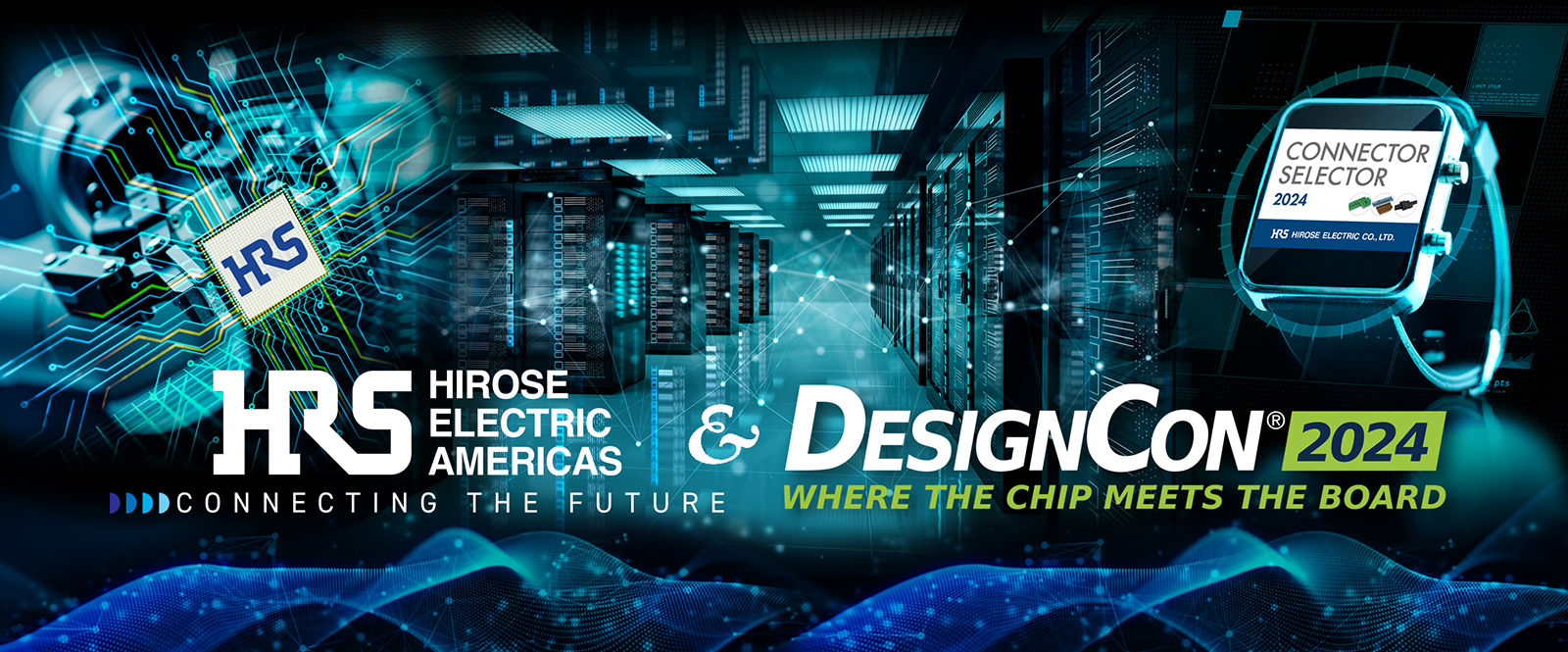DesignCon 2024: Advancing High-Speed Tech & Connector Innovations
THIS YEAR'S MUST ATTEND SHOW FOR EVERYTHING HIGH-SPEED
DesignCon 2024 did not disappoint in showcasing the future of high-speed technology solutions, from the chip to system designs. At center stage were talks of evolving high-speed application requirements dictating next-generation equipment designs. Discussions on how to keep pace with high-speed demands and address design challenges ran rampant throughout the show floor. Hot button issues also included developing standardization and implementation of PAM 4 and PCIe Gen 6 and 7a protocols and the previously launched CXL protocol.

EMERGING APPLICATIONS
From chipsets to connectors, hardware manufacturers are feverishly developing products supporting higher data speed requirements of next-generation equipment. DesignCon 2024 showcased components and systems supporting advanced AI, machine learning, and autonomous vehicle applications that will soon warrant high-speed data transfers up to 224 Gb/s (and beyond).
SUPPORTING NEXT-GEN CHIPSETS
Today’s chipset technologies include novel features and functionalities, such as advanced sensors, higher-resolution displays, and faster wireless communication standards. Connector manufacturers must innovate alongside, if not beyond, chipset developments to support developing, testing, and integrating next-gen chipsets. This includes designing connectors capable of handling new data protocols, power delivery standards, and signal integrity requirements.
PROTOCOLS
The buzz surrounding PAM4 was loud at DesignCon 2024. Higher data rates will be carried by new protocols, including PAM 4 and PCIe Gen 6 / 7a. PAM4 is a new form of pulse amplitude modulation using four amplitude levels. PAM4 offers superior spectral efficiency by transmitting multiple bits of data per symbol to increase the data rate without requiring additional bandwidth. However, PAM4 signals also suffer greater ISI (inter-symbol interference)
Connectors, like Hirose’s IT14 Series, support 112 Gbps PAM4 transmission speeds and offer excellent signal integrity performance. The stackable ball grid array (BGA) mezzanine connector features a self-mating design to eliminate the need for additional mating parts. Fewer mating parts reduce costs, increase reliability, and enhance performance. The hermaphroditic IT14 Series connector has been widely accepted by the open computer project (OCP).
DesignCon 2024 featured a demo of Hirose’s next-gen IT16 Series, which will be officially launched later this year. The IT16 Series mezzanine connector supports PAM4 applications and features an industry-best 46 mm stacking height.
PCIe Gen 6 is another protocol with exciting chatter at DesignCon 2024. Officially launched in 2022, PCIe Gen 6 products are still making their way into mainstream designs. Developed for compute-intensive applications like AI and machine learning, Hirose’s IT8 Series mezzanine connectors support PCIe Gen 6. Featuring a Quasi-Coaxial Structure and Polarity-Swap FEXT canceling technology, the IT8 Series demo at DesignCon 2024 displayed the highest signal density in the market.
DesignCon 2024 also promoted technologies enabling PCIe Gen 7. Although specifications are not yet completely defined, experts at DesignCon 2024 agreed that Gen 7 will be here sooner rather than later. Utilizing PAM4 signaling, PCIe Gen 7 will double data rates to 128 Gb/s for next-level computing. The PCIe 7.0 specification is targeted for release to members in 2025.
DESIGN CHALLENGES
Application challenges, including space constraints, thermal loads, and power consumption, were all top of mind at DesignCon 2024. Many booths demonstrated ways to manage temperatures in high-speed applications. Heat dissipation is vital to the performance of components in high-speed applications. Hirose’s BK35 Series demo illustrated how high-speed hybrid power / signal FPC-to-board connectors can simplify cable management and improve system airflow by saving significant space. Hybrid connectors reduce the number of components required on the PCB, offering design flexibility and miniaturization. Eliminating cables also allows fans to circulate airflow better for superior thermal management. The trend towards FPC/FFC technology is nothing new due to their low cost and small size.
CONCLUSION
DesignCon 2024 once again confirmed that the efficiency of high-speed systems depends on many factors, with connectivity and connector performance being one of the key elements. Designers must consider many requirements across several engineering disciplines when choosing a high-speed connector solution. Today’s systems demand much more than high-speed transmission. Connector solutions must deliver high-density performance, excellent signal integrity, design flexibility, durability, ease of use, and more, all in a compact footprint.
DESIGNCON 2024 | Image source Hirose Electric Americas
connection point
Welcome to 'Connection Point' - your go-to spot for the latest in electronics. Here, we're all about connecting you with fresh ideas, engaging stories, and innovative solutions from Hirose Electric. Whether you're a tech enthusiast or an industry professional, there's something here for everyone.
Don't miss out on any of our updates – subscribe now and join our community of innovators and thinkers.
For more information on how Hirose Electric's connectors can transform your wearable device design, visit hirose.com or contact our team of experts today.



